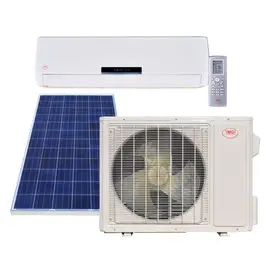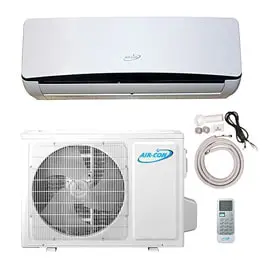In the realm of heating and cooling systems, the mini split heat pump stands apart as a marvel of modern engineering. Supplying a blend of efficiency, versatility, and comfort, these systems have revolutionized just how we control indoor climates. Let's delve into what makes mini split so remarkable.
Compact and Flexible Design
One of the primary features of mini split heat pumps is their compact size and flexible installation options. Unlike traditional HVAC systems that want ductwork, mini splits operate without the necessity for extensive infrastructure. This makes them ideal for both new constructions and retrofitting existing buildings. By having an outdoor condenser unit connected to one or more indoor air-handling units via a small conduit, mini splits may be installed in spaces where conventional systems could be impractical or costly.

Zoned Heating and Cooling
Mini split heat pumps offer zoned heating and cooling capabilities, allowing users to regulate the temperature of individual rooms or zones independently. Each indoor unit functions as a different zone, equipped with its own thermostat and fan speed controls. This zoning feature not merely enhances comfort by providing personalized climate control but also plays a role in energy savings by avoiding unnecessary heating or cooling of unoccupied spaces.
Energy Efficiency
Efficiency is just a hallmark of mini split heat pumps. These systems utilize advanced technologies, such as for example inverter-driven compressors and variable-speed fans, to optimize energy usage. Unlike conventional HVAC systems that constantly cycle on and off at full capacity, mini splits adjust their output on the basis of the heating or cooling requirements of the room, leading to more consistent temperatures and reduced energy consumption. Additionally, many models boast high SEER (Seasonal Energy Efficiency Ratio) and HSPF (Heating Seasonal Performance Factor) ratings, indicating their ability to provide heating and cooling efficiently through the year.
Year-Round Comfort
Mini split heat pumps are made to provide both heating and cooling, making them a versatile solution for year-round comfort. During the colder months, the device extracts heat from the outdoor air and transfers it indoors to warm the space. Conversely, in hot weather, the method is reversed, with heat being taken from the indoor air and expelled outside, effectively cooling the interior. This dual functionality ensures that occupants remain comfortable regardless of external weather conditions.
Quiet Operation
Another notable feature of mini split heat pumps is their quiet operation. The absence of noisy ductwork, along with the use of advanced compressor technology, results in minimal sound output compared to traditional HVAC systems. This makes mini splits particularly well-suited for residential settings where peace and quiet are valued.

Conclusion
The mini split heat pump represents an important advancement in HVAC technology, supplying a blend of efficiency, comfort, and flexibility that traditional systems struggle to match. Using their compact design, zoned heating and cooling capabilities, energy-efficient performance, and year-round comfort, mini splits have earned their place as a preferred solution for both residential and commercial applications. Because the demand for sustainable and customizable heating and cooling solutions keeps growing, the mini split heat pump is poised to remain at the forefront of innovation in the HVAC industry.
